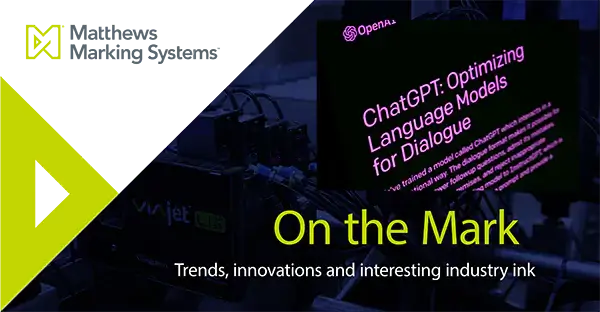How ChatGPT could transform packaging, design and manufacturing; Advanced recycling technology seeks to win over skeptics

Catching up on interesting news and innovations in production, packaging and more
ChatGPT can help transform packaging design and manufacturing, industry leaders say
The effects of generative AI are felt across all industries, including packaging. Speakers at a recent manufacturing conference noted how AI could change behind-the-scenes processes, speed packaging design versioning, and make operations more resilient. With the introduction of several AI platforms and their fast and continuous evolution of improvements, packaging designers can move faster than ever to serve their clients.
Leaders experimenting with generative AI discussed its potential applications in advanced manufacturing. For example, ChatGPT can improve workforce resiliency by being trained on internal assets to help establish better process documentation to get workers up to speed faster. In addition, manufacturers could use digital twins to optimize a packaging line or assess the functionality of recycled plastic in a product.
As one designer stated, the quality of these tools is improving from just a few weeks ago, “imagine what’s going to happen in the next two or three years.” Source: packagingdive.com.
Advanced recycling seeks to win over skeptics
Third-party certifications are what gives consumers confidence that plastic products labeled as recycled are derived from a circular method. But before consumers get their hands on a package, CPG brand owners and others throughout the value chain must first understand how advanced recycling works to feel confident in a certification’s credibility and traceability before adding certification labels to product packaging.
Advanced recycling is a newly adopted technology and chemically recycled PCR is scarce, so the approach (and its certification) is a matter of averages – a reality that has made CPGs skeptical and slow to adopt the certifications. At a recent Innovation and Circularity Summit, certifiers discussed the CPG landscape and how CPG and consumer education as well as CPG communication with upstream suppliers are keys to adoption.
For instance, a mass balance approach (such as matching inputs from plastic waste with outputs from a chemical recycling process to determine recycled content) was once seen as smoke and mirrors, but as consumers have become more educated on technical recycling concepts, CPGs are also coming around to adopt new certification schemes and labels, such as 50% certified recycled material*. Note the asterisk, which leads interested consumers to learn more about advanced recycling. Source: packworld.com.
Healthcare and foodservice industries develop new GS1 US implementation guidance on RFID, traceability
GS1 US has published two new guidelines for RFID usage in the healthcare and food service industries. The guidelines help inform suppliers encoding GS1 standards in RAIN RFID tags and provide a roadmap for adoption. They are designed to enable more efficient tracking, management and traceability of products throughout the supply chain.
One guideline, titled, “Implementation Guideline for RFID in Healthcare Manufacturing: Using GS1 Standards to Enable Visibility and Efficiency” defines the application of GS1 Standards to support adoption of RFID by healthcare supply chain stakeholders.
The other, titled, “GS1 US RFID Foodservice Implementation Guideline” provides case/carton requirements for foodservice suppliers to minimize disparate supplier tagging requirements. The second guideline is also important for CPGs, as it specifies tag encoding, tag marking and tag placement. Source: packagingtechtoday.com.
Supply chain and warehouse technologies address present and future disruptions
As we all experienced during the pandemic, supply chains – no matter how simple or complex – are prone to disruption. Future challenges to supply chains are only believed to increase, including weather disruptions, labor shortages, cybersecurity, trade wars, climate change, and more. Because of these issues, along with consumers’ increased appetite for e-commerce and sustainability, companies are looking more closely than ever at their supply chains and manufacturing processes.
Technology leaders are urging manufacturers to get ahead of these challenges by diversifying sourcing and manufacturing locations and maintaining strong supplier relationships. They’re encouraging manufacturers to use warehouse management systems (WMS) to automate all areas of the warehouse using smart devices, AR, IOT, drones and more.
The goals of using these technologies, of course, are to reduce errors, improve inventory management, enhance worker safety and productivity, and improve resource positioning and utilization. However, the WMS must match the unique challenges of each manufacturer, which varies widely across each industry. Source: automationworld.com.
Want to Make Your Mark?
What captured your attention in the news recently?
We want to share news that is important to our readers. Submit an industry news article that you found thought-provoking to [email protected], and we’ll consider adding it to an upcoming issue of On the Mark!
